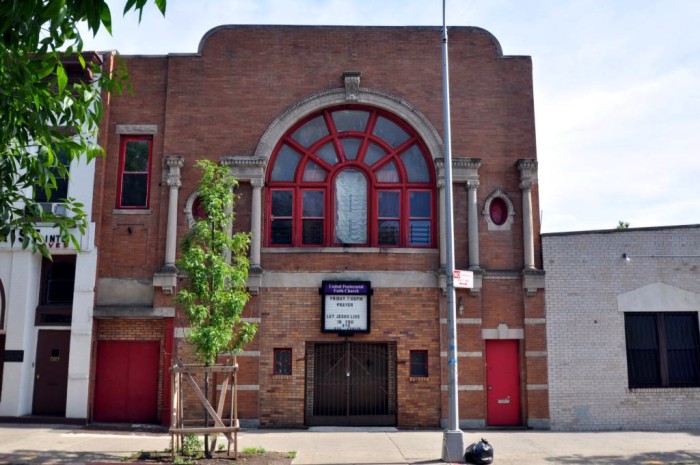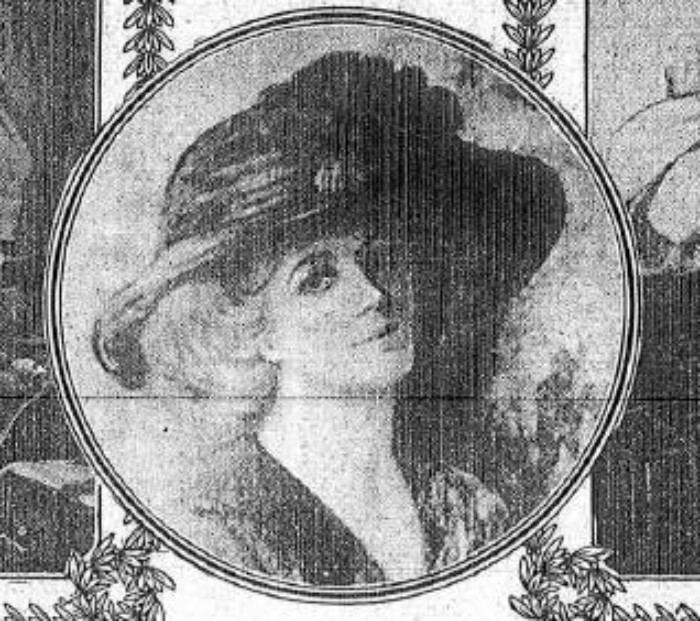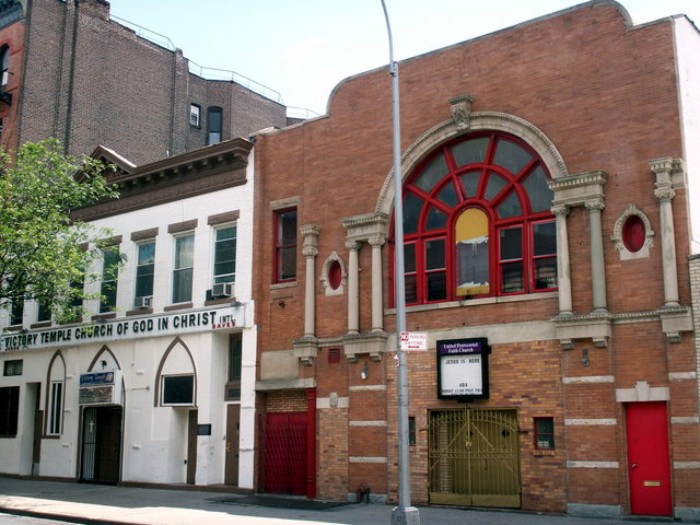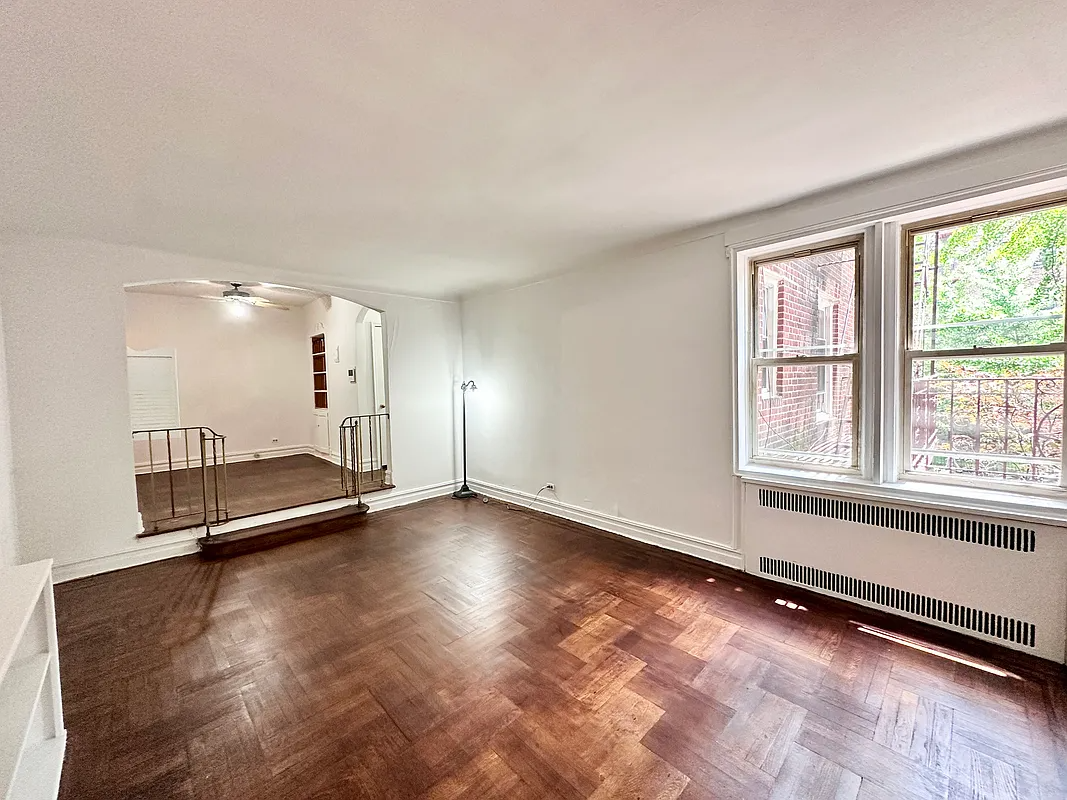Building of the Day: 404 Gates Avenue
Brooklyn, one building at a time. Name: United Pentecostal Faith Church, originally a music hall, then theater Address: 404 Gates Avenue Cross Streets: Nostrand and Marcy Avenues Neighborhood: Bedford Stuyvesant Year Built: 1910 Architectural Style: Neoclassic Architect: Thomas Bennett Other work by architect: Rows of houses in Sunset Park, flats buildings on 3rd St. Park…


Brooklyn, one building at a time.
Name: United Pentecostal Faith Church, originally a music hall, then theater
Address: 404 Gates Avenue
Cross Streets: Nostrand and Marcy Avenues
Neighborhood: Bedford Stuyvesant
Year Built: 1910
Architectural Style: Neoclassic
Architect: Thomas Bennett
Other work by architect: Rows of houses in Sunset Park, flats buildings on 3rd St. Park Slope, and buildings in Philadelphia
Landmarked: No
The story: Nostrand Avenue, at Gates Avenue used to be one of Bedford’s busier corners in the early 20th century. The Jenkins Building, on the southwestern corner was home to a large and important bank, the Jenkins Trust, a Williamsburg-based bank that had several branches in Brooklyn before they were taken down in a huge banking scandal towards the end of the first decade of the new century. Above the bank was a cold storage facility, where wealthy people stored furniture and other goods, as well as furs and perishable valuables. Across Gates Avenue was Arlington Hall, a late 19th century event and lecture hall, where local clubs and fraternal organizations met until 1918. Nearby were churches, stores and a firehouse. A block away on Gates and Marcy was the Gates Avenue Court House, and St. George’s Episcopal Church. This was a busy intersection, so it should come as no surprise that someone decided it was a great place for a small theater.
The records show that in 1910, architect Thomas Bennet was commissioned to build a small music hall. The building cost $9,000, and featured hardwood finishes, a North Carolina pine floor, gas and electric features and water closets. It was owned by a Harry Waters, and in 1914 was called the Princess Theater. Bennet had a good career, designing handsome flats buildings for Louis Bonert on 3rd Street in Park Slope, and a lot of row houses in Sunset Park, including 514-560 44th Street. He split his time between his office in Sunset Park and his office in Philadelphia, where he also had a busy practice.
The Princess Theater apparently began early in showing motion pictures, the silent films that made up the early cinema. They probably had a pianist to accompany the films. In 1912, the theater owner was one Harry Walrich, of Manhattan. That year, he was fined $100 for hiring an underage boy actor, 12-year-old Kenneth Casey, to help him with the movies. The child’s mother was also in court for allowing the boy to be employed. The theater didn’t last long.
In 1914, the artist Mme. Lillian DeSeverinus Sombrakos opened her art studio in this building. Lillian, born Lilian Georgina Drawater, in England, was a well-known artist in Brooklyn, the wife of a wealthy man named Theodore Sombrakos. She had had a gallery and school since 1898. She offered gallery space as well as room for lessons in drawing and painting. Mme DeSeverinus was quite the artist herself, and gave many showings of her own work in the gallery.
She was passionate about sharing art with all of Brooklyn, and stated, “the art of a nation is a reflection of its ideals, the artist the mirror through which they are reflected.” She didn’t believe that students needed to go to Europe to study art. “We want American art, national art!’ She later stated that “Art in America is here to stay.”
Art may be here to stay, but the wealthy Mr. and Mrs. Sombrakos family liked to travel. They made frequent trips to Europe, but almost got caught up in war. In 1914, they were travelling through Germany when World War I broke out. He and his wife had to escape from Germany, as that country was shutting its borders in anticipation of war, and soldiers were on patrol in the streets of Paris. They made it back to New York, just before transatlantic shipping became dangerous. The DeSeverinus Studios stayed in business here until 1922. Madame maintained a studio until her death in 1941. She had quite a career, and was an excellent artist.
The building next passed on to Congregation Ahavath Achim. They maintained the space as a synagogue from 1922 until the 1940s. The former theater, art studio, synagogue and now church seems to have been in the possession of various Pentecostal churches ever since. Who knew? GMAP
(Photo: Christopher Bride for PropertyShark)







What's Your Take? Leave a Comment